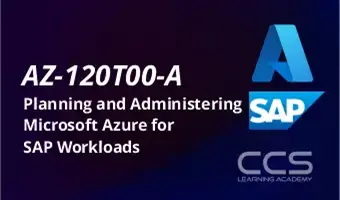Filter by Topic
Filter by Vendor
Microsoft Office Access 2019: Part 1
Course Description: Data is everywhere. Most job roles today involve …
What you'll learn
Navigate within the Access application environment, create a simple database, and customize Access configuration options.
Organize and manage data stored within Access tables.
Use queries to join, sort, and filter data from different tables.
Use forms to make it easier to view, access, and input data.
Create and format custom reports.
Microsoft Office Excel (2019-2016-2013): Advanced
Course Description: Clearly, you use Excel a lot in your …
What you'll learn
Work with multiple worksheets and workbooks.
Share and protect workbooks.
Automate workbook functionality.
Use Lookup functions and formula auditing.
Forecast data.
Create sparklines and map data.
Microsoft Office Excel (2019-2016-2013): Intermediate
Course Description: Whether you need to crunch numbers for sales, …
What you'll learn
Work with functions.
Work with lists.
Analyze data.
Visualize data with charts.
Use PivotTables and PivotCharts.
Microsoft Office Excel (2019-2016-2013): Basic
Course Description: Organizations the world over rely on information to …
What you'll learn
Get started with Microsoft Office Excel.
Perform calculations.
Modify a worksheet.
Format a worksheet.
Print workbooks.
Manage workbooks.
55299-A: SharePoint 2019 Site Owner Training
Course Description: This SharePoint 2019 Site Owner class is for …
What you'll learn
Learn to navigate a SharePoint 2019 Team Site.
Learn to create and edit web page content.
Learn to create site columns and content types.
Learn to integrate Office applications with SharePoint 2019.
Learn to manage basic permissions
Understand what Site Templates are.
Understand the different Tpes of Site Templates that come “Out of the Box”
Creating a new site using Site Templates
Create a Project site.
Create a Team site.
Create a Community site.
Create a Blog site.
Manage the sites listed in the Top Link Bar.
Understand what site pages are.
Understand what wiki pages are.
Understand what Web Parts are.
Understand how to add content to the Site Home page.
Understand how to create a wiki page library.
Understand how to add Web Parts.
Understand how to manage Web Parts.
Understand Site Columns.
Understand Content Types.
Understand how to create Site Columns.
Understand how to create Content Types.
Understand how to create a document template for a Content Type.
Understan how to assign a Content Type to a list or library.
Understand how to create new items based on a custom Content Type.
Understand SharePoint groups.
Understand how to create SharePoint groups.
Understand how to assign permission in SharePoint.
Understand how to view permission levels.
Understand how to manage permission inheritance at the site level.
Understand how to manage permission inheritance at the list or library level.
Understand how to edit a personal profile.
DP-100T01-A: Designing and Implementing a Data Science Solution on Azure
360° Microsoft Azure data science certification Course The Microsoft Azure …
AZ-500T00-A: Microsoft Azure Security Technologies
Course Description: This course provides IT Security Professionals with the …
What you'll learn
Implement enterprise governance strategies including role-based access control, Azure policies, and resource locks.
Implement an Azure AD infrastructure including users, groups, and multi-factor authentication.
Implement Azure AD Identity Protection including risk policies, conditional access, and access reviews.
Implement Azure AD Privileged Identity Management including Azure AD roles and Azure resources.
Implement Azure AD Connect including authentication methods and on-premises directory synchronization.
Implement perimeter security strategies including Azure Firewall.
Implement network security strategies including Network Security Groups and Application Security Groups.
Implement host security strategies including endpoint protection, remote access management, update management, and disk encryption.
Implement container security strategies including Azure Container Instances, Azure Container Registry, and Azure Kubernetes.
Implement Azure Key Vault including certificates, keys, and secretes.
Implement application security strategies including app registration, managed identities, and service endpoints.
Implement storage security strategies including shared access signatures, blob retention policies, and Azure Files authentication.
Implement database security strategies including authentication, data classification, dynamic data masking, and always encrypted.
Implement Azure Monitor including connected sources, log analytics, and alerts.
Implement Azure Security Center including policies, recommendations, and just in time virtual machine access.
Implement Azure Sentinel including workbooks, incidents, and playbooks.
AZ-120T00-A: Planning and Administering Microsoft Azure for SAP Workloads
Course Description: This course teaches IT Professionals experienced in SAP …










